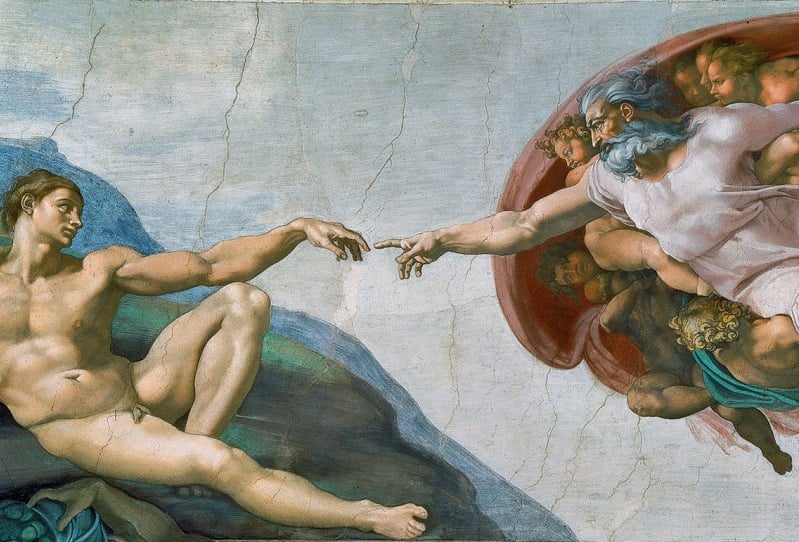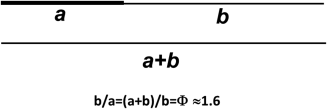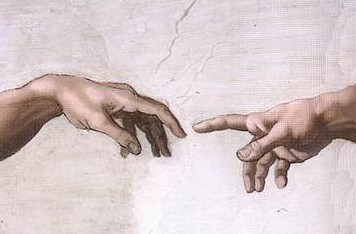People
The Surprising Secret Behind Michelangelo’s Sistine Chapel Design
Scientists weigh in on the Sistine Chapel's most famous fresco.

Scientists weigh in on the Sistine Chapel's most famous fresco.

Rain Embuscado


Michelangelo, The Creation of Adam (1512).
Photo: via Wikimedia.
Fans of the golden ratio have reason to rejoice. Recent evidence suggests that the great architect of the High Renaissance himself borrowed the technique.
According to a report in the medical journal Clinical Anatomy, Michelangelo relied on the special number to achieve harmony in his work. The scientists’ research notes that this is especially true in “The Creation of Adam,” the Daily Mail reports.

The Golden Ratio.
Photo: via Wiley Online Library.
For context, the diagram above illustrates their theory: A is to Adam while B represents God and his cherubic minions. To verify their hypothesis, the scientists used Image-Pro Plus to measure the spatial relationships between points on the painting. As it turn outs, the distance between their fingers marks the divide between the golden ratio.

Michelangelo, The Creation of Adam (detail).
Photo: via Wikimedia.
The scientists explained the significance of this finding in their abstract:
[A]ccording to the evidence shown in this article, we can suppose that the beauty and harmony recognized in all Michelangelo’s works may not be based solely on his knowledge of human anatomical proportions, but that the artist also probably knew anatomical structures that conform to the GR display greater structural efficiency.

The Sistine Chapel’s ceiling.
Photo: via Wiley Online Library.
A similar pattern was discovered throughout the Sistine Chapel’s fresco.

Michelangelo, The Sistine Chapel ceiling (1508 – 1512).
Photo: via Getty Images.
If you’re interested in learning more about the golden ratio, we’ll spare you the math lesson and link you to this Khan Academy video.